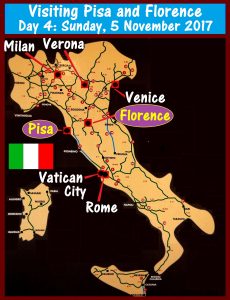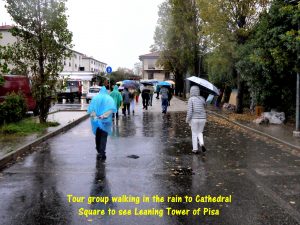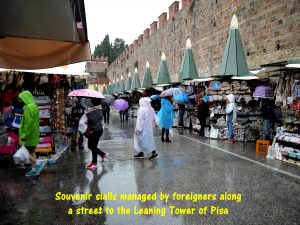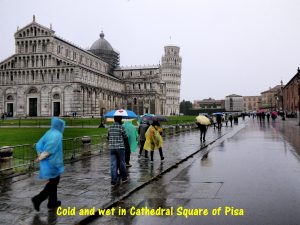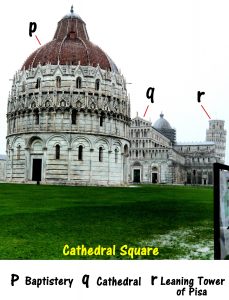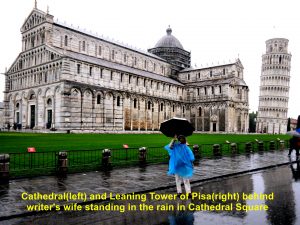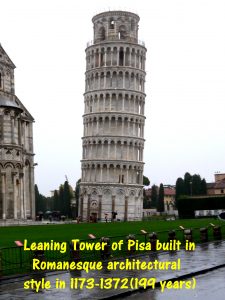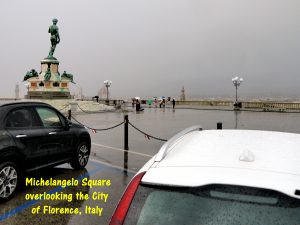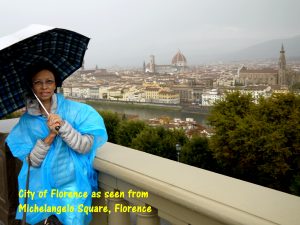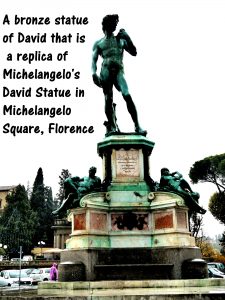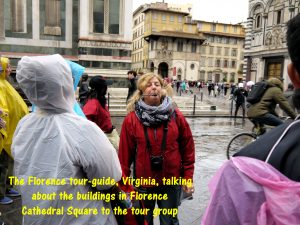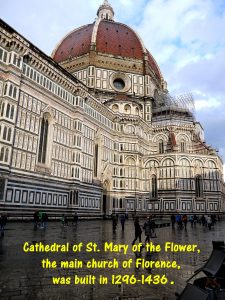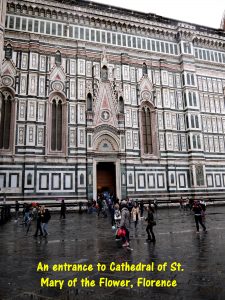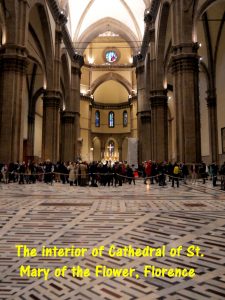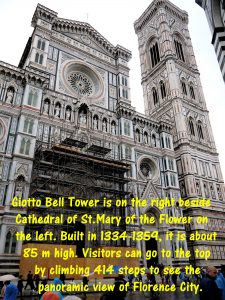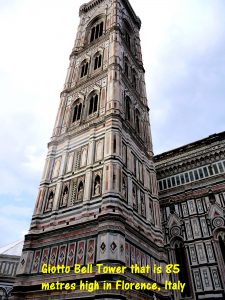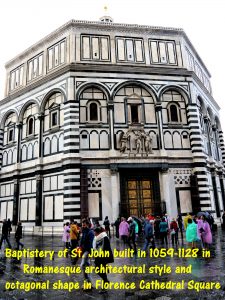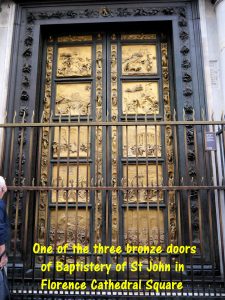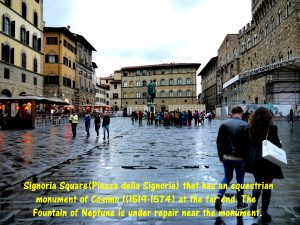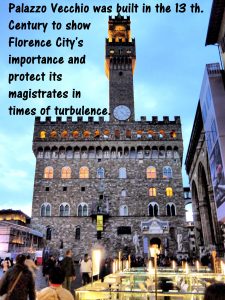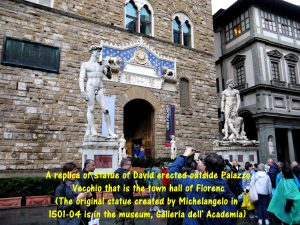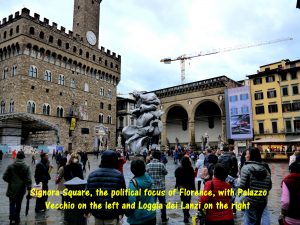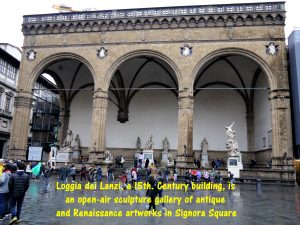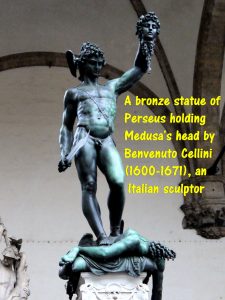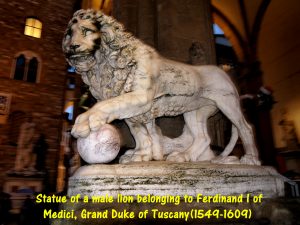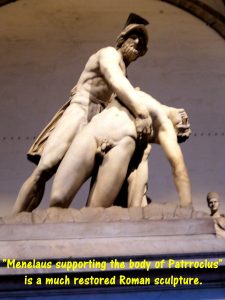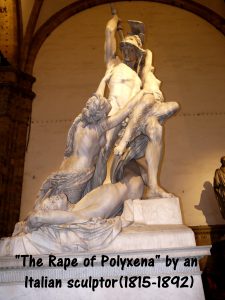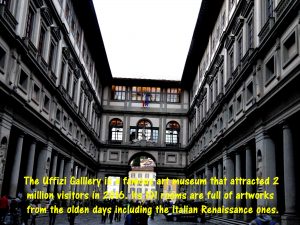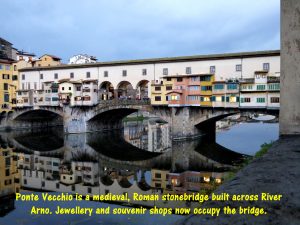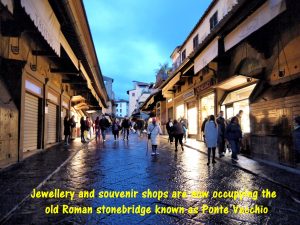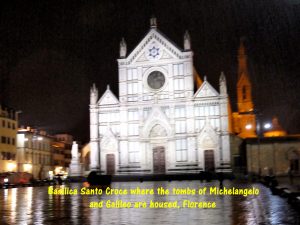Italy Travel Part III: Pisa and Florence
Italy Travel Part III: Pisa and Florence
Day 4: Sunday, 5 November 2017
Visiting Leaning Tower of Pisa, Pisa
Rain in Pisa
In the morning we left our hotel. Hotel President near Florence and went west to Pisa. On arrival at Pisa, we walked in the rain from the coach parking area to Cathedral Square which was a few hundred metres away.
Pickpockets
On the way we came across some foreigners selling umbrellas and ponchos. They forewarned us that there were several pickpockets around, trying to steal tourists’ money. As we were walking to the square, we looked out for one another. Luckily, none of us fell prey to the pickpockets.
Three Monumental Buildings
When we were in the square we saw three prominent monumental buildings, namely Baptistery of St. John, Cathedral of Pisa and a world’s famous leaning tower known as “Leaning Tower of Pisa”.
Baptistery of St. John
Baptistery of St. John is a Roman Catholic church that was built in Romanesque and Gothic architectural styles in the 1152-1363 period.
Cathedral of Pisa
Cathedral of Pisa is in between Baptistery of St. John and the Leaning Tower of Pisa. It was built in Romanesque architectural style from 1063 until 1092 and dedicated to the Assumption of Virgin Mary. Now it is the seat of Archbishop of Pisa
Leaning Tower of Pisa
The well-known tower, Leaning Tower of Pisa, which is about 56 metres high was built in Romanesque architectural style. The builders took almost 200 years(1173-1372) to complete the construction. Unfortunately, the tower tilted slowly to as much as 5.5 degrees while they were building it. It was due to weak foundation on one side of the ground.
Tower Tilting 5.5 Degrees
Later, frantic efforts were carried out to make the tower stand upright. But they could only reduce the leaning angle to about 3 degrees as we are seeing it now. I think it is because of its tilting nature that attracts the attention of millions of tourists every year.
Visiting Florence
Michelangelo Square
In the afternoon we left Pisa and travelled east to Florence City. Before we entered the city, we went to Michelangelo Square on a small hill in the south. Standing at the square in the rain, we saw the beautiful city of Florence.
Bronze Statue of David
In the square we saw a bronze statue of David which is a replica of Michelangelo’s marble statue of David.
Florence Square
When we entered the city centre, the first place we visited was a square known as Florence Square where we met a local guide, Virginia.
Florence Tour Guide, Virginia
In the square, Virginia brought us round and told us about the monumental buildings. some of which are shown below
Cathedral of St. Mary of the Flower
This huge cathedral with a red dome was built in 1296-1436 in Gothic architectural style. It is the largest one in Florence.
Giotto’s Bell Tower
Close to the cathedral and built in Gothic architectural style from 1334 until 1359 is a tall tower, Giotto’s Bell Tower, that is about 85 metres tall. Visitors can climb up 414 steps to the top to see the whole city of Florence.
Baptistery of St. John
Another building near the cathedral is Baptistery of St. John in Romanesque architectural style. It was built in the 1059-1128 period in octagonal shape and has three bronze doors with relief sculptures. One of them was dubbed as “Door of Paradise” by Michelangelo.
Signora Square
Then we walked a short distance to another place known as Signora Square. This square was the political focus of Florence for many years. On one side of the square an equestrian monument of Cosimo I(1519-1574) was erected in 1594.
Cosimo I Monument
Cosimo I was the 2nd. Duke of Florence from 1537 until 1569. The Fountain of Neptune near the monument was under repair.
Palazzo Vecchio
In the square there is a building, Palazzo Vecchio, which houses the town hall and a museum, too. It was built in the 13th. Century to show the importance of Florence and protect the magistrates of the city in times of turbulence.
Statue of David
At the entrance of the building there is a statue of David which is a replica of Michelangelo(1475-1564)’s David statue on one side and statues of Hercules and Cacus by Baccio Bandinelli(1493-1560) on the other side.
Loggia dei Lanzi
Loggia dei Lanzi built in the 15th. Century is an open-air gallery of Renaissance sculptures.
This building at Signora Square displays several beautiful sculptures. The photos below show some of them.
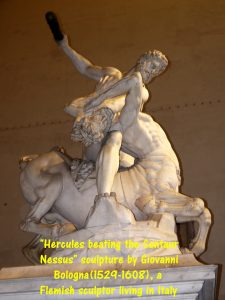
“Hercules beating the Centaur Nessus” by Giovanni Bologna(1529-1608), a Flemish sculptor living in Italy
Uffizi Gallery
Uffizi Gallery is behind Loggia dei Lanzi. It is a famous large museum that has 101 rooms displaying artworks, particularly, from the Italian Renaissance period. It attracts many visitors every year. About 2 million people entered the museum in 2016.
Uffizi Gallery has niches in exterior columns that contain statues of important historical figures, such as Michelangelo Buonarroti, Leonardo da Vinci, Galileo Galilei, and Dante to name a few.
Michelangelo Buonarroti(1475-1564)
Michelangelo was born in Florence, He was a sculptor, painter, architect and poet. His famous sculptures include “David” and “Pieta”.
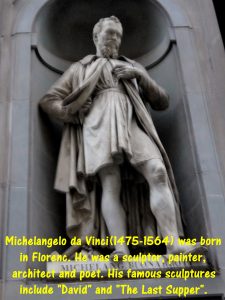
Michelangelo Buonarroti(1475-1564) was born in Florence. He was a sculptor, painter, architect and poet. His famous sculptures include “David” and “Pieta”.
Leonardo was an Italian polymath who had many areas of interest such as sculpture, painting, invention and astronomy. His famous paintings include “Mona Lisa” and “The Last Supper”.
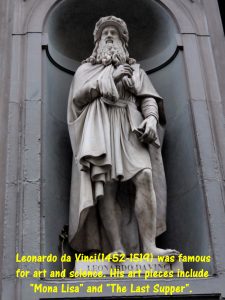
Leonardo da Vinci(1452-1519) was an Italian polymath who had many areas of interest. His famous paintings include “Mona Lisa” and “The Last Supper”.
Galileo Galilei(1564-1642)
Galileo was also an Italian polymath who was interested in astronomy, physics, engineering, natural philosophy and Mathematics.
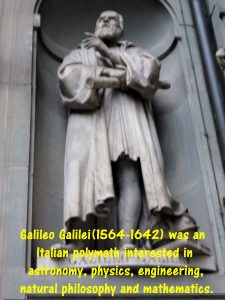
Galileo Galilei(1564-1642) was an Italian polymath interested in astronomy, physics, engineering, natural philosophy and Mathematics.
Dante Alighieri(1265-1321)
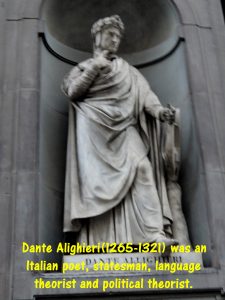
Dante Alighieri(1265-1321) was an Italian statesman, poet, language theorist and political theorist.
Ponte Vecchio(Old Bridge)
Ponte Vecchio is a 30 metre-long stone-bridge that spans River Arno. The first bridge was built in the Roman times. It had been destroyed by flood a few times and then reconstructed.
Shops have been built on the bridge selling jewellery and souvenirs to tourists.
Basilica Santo Croce
In the evening we left the old bridge, Ponte Vecchio, and walked for several minutes to a restaurant for dinner. On the way we came across a white cathedral, Basilica Santa Croce(Basilica of the Holy Cross), that housed the tombs of many influential Italians, including those of Michelangelo and Galileo. So it is also known as the Temple of the Italian Glories.
Built in the 1294-1385 period. it is the main principal Franciscan church and a minor basilica of the Roman Catholic church.
Hotel President, Prato, Florence
After dinner we went back to our hotel, Hotel President in Prato, to rest.
The following day, we left Florence for Venice.
Italy Travel Part I: Rome and Vatican City
Italy Travel Part II : Rome(continued)
Italy Travel Part III: Pisa and Florence
Italy Travel Part V(Final): Florence and Milan
Comments
Tell me what you're thinking...
and oh, if you want a pic to show with your comment, go get a gravatar!

